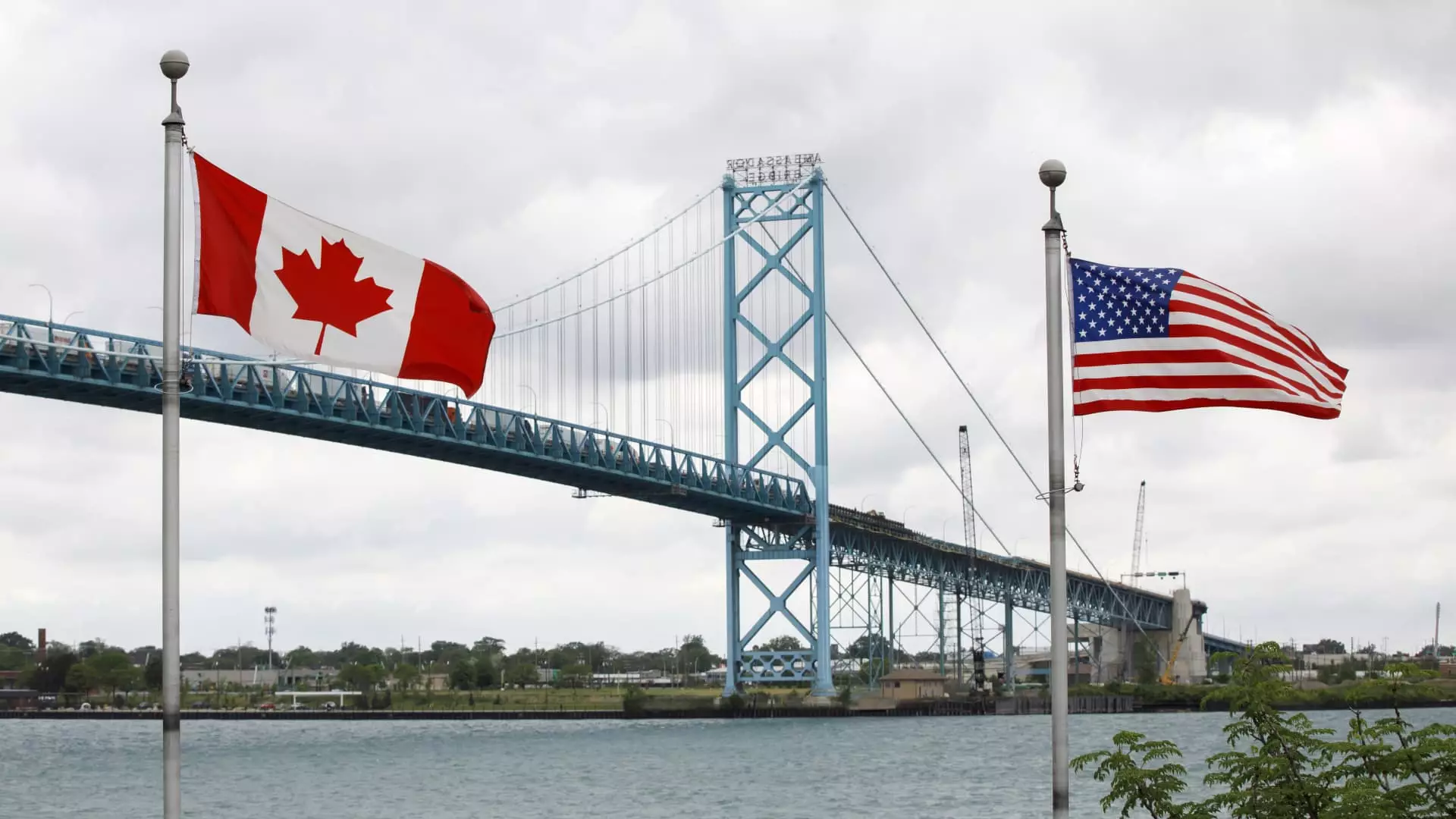The automotive sector is a crucial part of Canada’s economy, especially in Ontario, where major automakers have established significant manufacturing operations. However, the recent announcement by President-elect Donald Trump regarding the imposition of a staggering 25% tariff on Canadian imports has raised significant alarms within this vital industry. For a province that produced over 1.54 million light-duty vehicles in 2022—many of which are destined for U.S. consumers—the proposed tariffs pose a substantial risk not only to Canadian jobs but also to the broader U.S. employment landscape.
Tariffs act as taxes levied on imports, effectively raising costs for manufacturers that rely on foreign goods. Ontario Premier Doug Ford expressed that such tariffs could be detrimental to both sides of the border. The intertwined nature of the automotive supply chain means that raw materials and parts routinely cross the Canada-U.S. border multiple times. The complexity of this cross-border trade complicates the implementation of tariffs, as they threaten to inflate vehicle prices, disrupt production cycles, and ultimately lead to job eliminations across both countries.
The Economic Ripples of Tariff Implementation
The implications of Trump’s tariff proposal extend beyond mere job losses; they could also escalate vehicle prices dramatically. According to estimates from Wells Fargo, adding tariffs to auto components could potentially increase vehicle costs by anywhere from $600 to $2,500. In a market where vehicles assembled in Canada and Mexico constitute nearly a quarter of all U.S. vehicles sold, a price surge ranging from $1,750 to $10,000 would reverberate throughout the industry. Such financial burdens would further complicate the already fragile recovery of the Canadian automotive sector, which has struggled in recent years due to pandemic-related disruptions.
The political ramifications of these tariffs are also considerable, particularly for Canadian Prime Minister Justin Trudeau, who faces mounting pressure domestically. Ontario’s government has taken proactive measures to counter the tariffs by launching a multimillion-dollar advertising campaign in the U.S. aimed at reiterating its position as a key trading partner.
Historically, Canada has been a steadfast ally and major trading partner to the United States. According to Ford, Ontario alone ranks as the third-largest trading partner of the U.S. and serves as the leading foreign trade partner for 17 individual states. Trade relations have generally favored cooperative agreements, but the current instability signifies a shift in dialogue. The automotive sector illustrates this point with exports of auto parts reaching an impressive $23.5 billion in 2023. The overall trade dynamics show that any disruption, including proposed tariffs, could have negative repercussions on both sides of the border.
Flavio Volpe, head of the Canadian Automotive Parts Manufacturers’ Association, emphasized that a “best tariff level” for both nations would ideally be zero. The potential implementation of double-digit tariffs is viewed as an existential threat within the Canadian auto industry, with forecasts suggesting a decrease in production rates and increased job losses.
The Canadian automotive sector has been bouncing back from years of decline exacerbated by the COVID-19 pandemic. Despite a production increase to 1.54 million vehicles last year, the industry still suffers from a significant downturn compared to its peak of 2.9 million vehicles in 2000. Automakers are caught at a crossroads, facing an uncertain future as the industry transitions toward all-electric vehicles (EVs). The pace of this transition has not met expectations, leading to substantial layoffs and plant closures in Ontario.
Adding to the uncertainty is Trump’s plan to eliminate electric vehicle purchase subsidies, which currently bolster sales. This could lead to a slowdown in the broader movement toward EV adoption, which would impact both Canadian and U.S. markets.
In light of these challenges, Ford stressed the need for the U.S. and Canada to work collaboratively rather than confrontationally. He proposed that both nations should refocus efforts on fortifying alliances against external threats, particularly from competitors like China and Mexico. Trade agreements have historically contributed to economic growth on both sides of the border, and fostering these relationships will be essential in navigating the unfolding trade landscape.
Ultimately, the ongoing discussion about tariffs reflects a broader narrative: the need for constructive dialogue rather than divisive policies. As the automobile industry grapples with unprecedented challenges, embracing mutual cooperation could potentially pave the way for a stronger, more resilient economic future.

